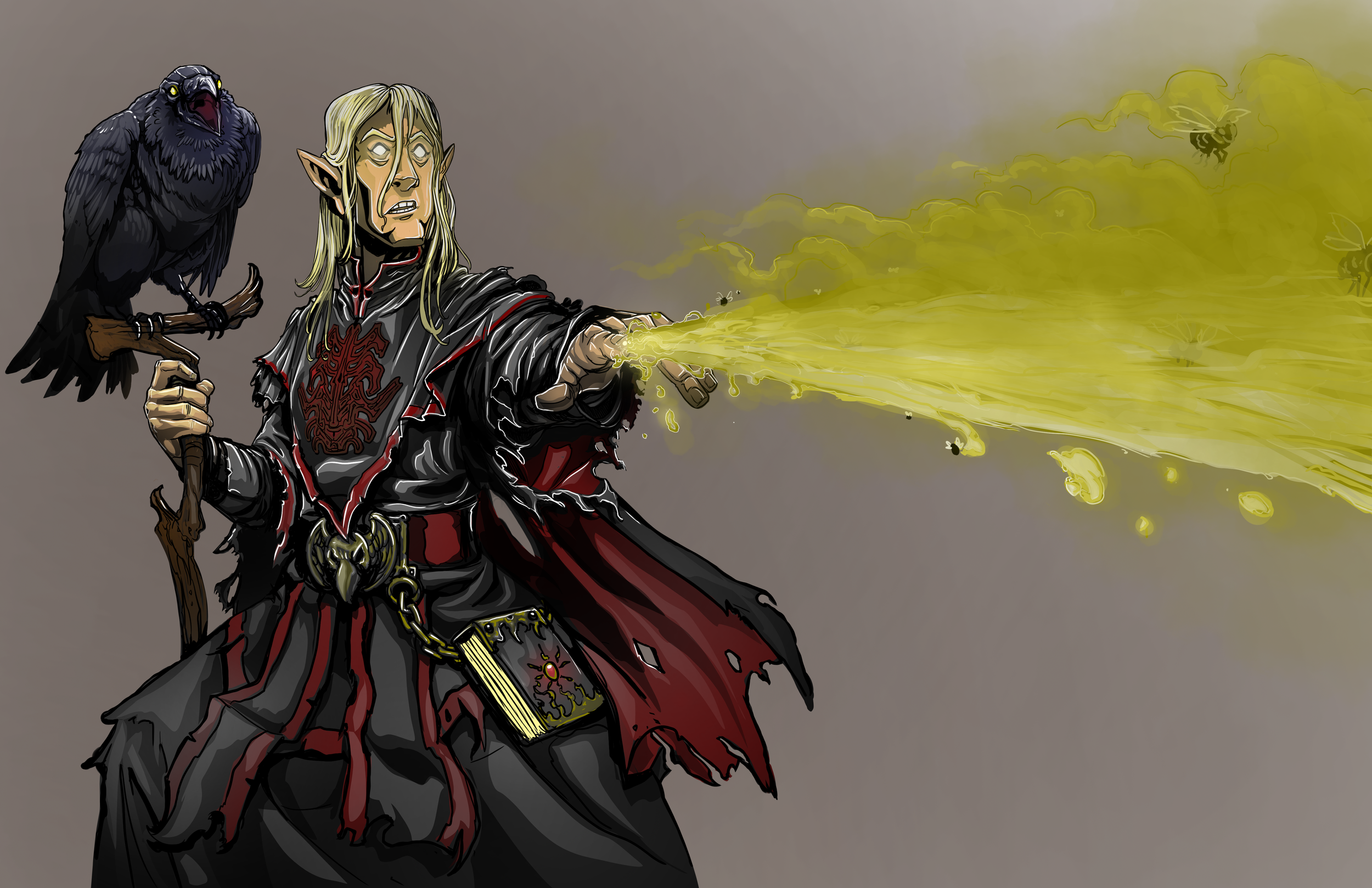Ray of Sickness: This Spell Blows Chunks
Spell Level: 1
School: Necromancy
Casting Time: 1 action
Range: 60 feet
Duration: Instantaneous
Components: V, S
A ray of sickening greenish energy lashes out toward a creature within range. Make a ranged spell attack against the target. On a hit, the target takes 2d8 poison damage and must make a Constitution saving throw. On a failed save, it is also poisoned until the end of your next turn.
At Higher Levels. When you cast this spell using a spell slot of 2nd level or higher, the damage increases by 1d8 for each slot level above 1st.
Review by Sam West, Twitter: @CrierKobold
“A sickening greenish energy lashes out toward a creature…” evokes pestilence brought upon a foe from an evil necromancer, one who inflicts disease as a weapon to maim their enemies. Metal. Sick as hell.
In practice, you throw out an attack slightly better than Fire Bolt, with the possibility of poisoning a foe for a single round. Not quite evocative of inflicting sickness; more like inflicting spontaneous vomiting.
Spell attack rolls are in the same category as save or die spells are to me, in that when you cast it, there is a reasonable chance nothing will occur. If you fire out Ray of Sickness, you have to accept sometimes you’ll miss. The 1st level slot goes away, and nothing beneficial comes of it. Rough. To make matters worse, when you do succeed, sometimes you don’t even poison the foe. They get an additional save, and only then, should they fail it, do you actually inflict some level of illness.
The illness itself is fine, but not revolutionary. For a 1st level spell, inflicting disadvantage on attack rolls and ability checks for a round can be potent. With how unlikely you are to actually get the outcome, it's hard to say it’s worth all the risk. Somewhere in these words is the makings of a spell that would be worth it, but just this effect is certainly not.
2d8 poison damage for a 1st level slot to a single target is garbage. An easy comparison is Guiding Bolt, another ranged damage spell with upside against a hit creature. Guiding Bolt is dealing 4d6 (an average of 5 better) instead, and so long as you hit, always grants you the upside. Inflict Wounds is another evil feeling spell, and while the range is far shorter, is dealing nearly double average damage with 3d10 necrotic.
As a DM tool, Ray of Sickness is tricky. Multiples of larger damage dice early are incredibly dangerous to pull out, as high rolling 2d8 to deal 16 damage can outright kill 1st level characters, and even as you get into levels two through five represents a major chunk of player HP. On the flip side, you can’t rely on that to happen, as rolling low can result in two or three damage that the group just laughs off. The poison condition being an extra save here feels a lot better than just hitting a player and telling them they’re poisoned, which is great, but as the game progresses to a point where the damage dice isn’t really a concern you get better tools for poisoning players and selling the sickness fantasy. It’ll still easily fit on your plague bearer villains. It just clearly isn’t aimed at exclusively being a villain spell.
While a 1st level slot is a fairly low cost, you just don’t get enough numerically out of the spell to justify taking it. If it always poisoned on hit, did an extra d8 poison damage, or had a longer duration of the poison effect to make it feel more impactful and high risk high reward I’d be a bit more inclined to recommend it. As written, this is a bottom of the barrel damage spell you probably shouldn’t take on characters beyond those craving the power to shoot sickening bolts at people. I’m usually down on attack based spells because missing just feels so horrible when you could instead use a save that at least does something; this is an attack based spell at its worst.
Thank you for visiting!
If you’d like to support this ongoing project, you can do so by buying my books, getting some sweet C&C merch, or joining my Patreon.
The text on this page is Open Game Content, and is licensed for public use under the terms of the Open Game License v1.0a.
‘d20 System’ and the ‘d20 System’ logo are trademarks of Wizards of the Coast, Inc.
and are used according to the terms of the d20 System License version 6.0.
A copy of this License can be found at www.wizards.com/d20.



